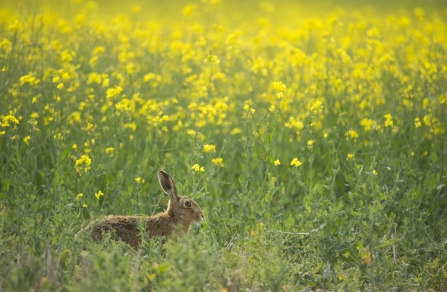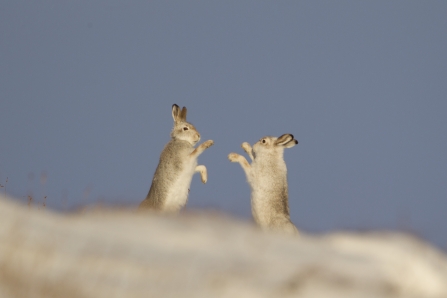
Credit: Andrew Parkinson/2020VISION
It is believed hares were introduced to Britain by the Romans some 2,000 years ago though this is disputed, fossil records show their ancestors have been around since the dinosaurs.
‘Harebrained’ and ‘Mad as a March Hare’ seem to relate to their behaviour, that of being easily startled and their ability to jump sideways and straight up, alongside the ‘boxing’ that accompanies mating rituals. Once thought to be males competing, it is now believed to be the females way of discouraging amorous males. Although mating takes place in March, it is a long season from February to August. Possibly the ‘March’ refers to ‘Marsh’, it is recorded that in 1500 in Blowbel’s Test "Thanne [th]ey begyn to swere and to stare, And be as braynles as a Marshe hare."

